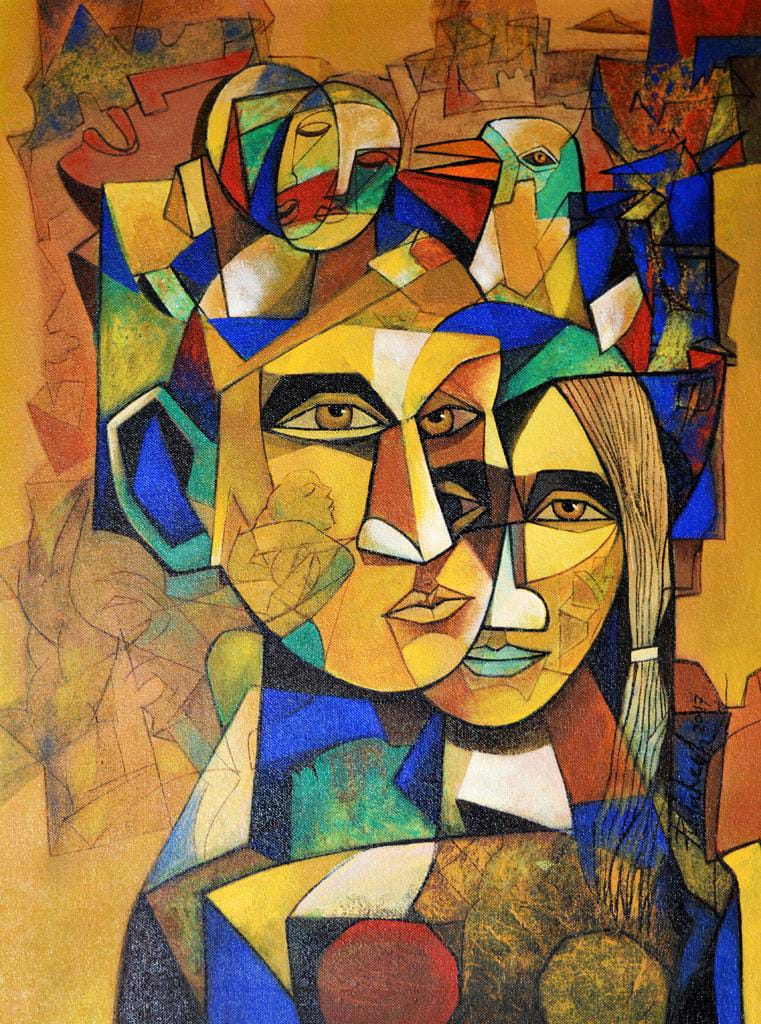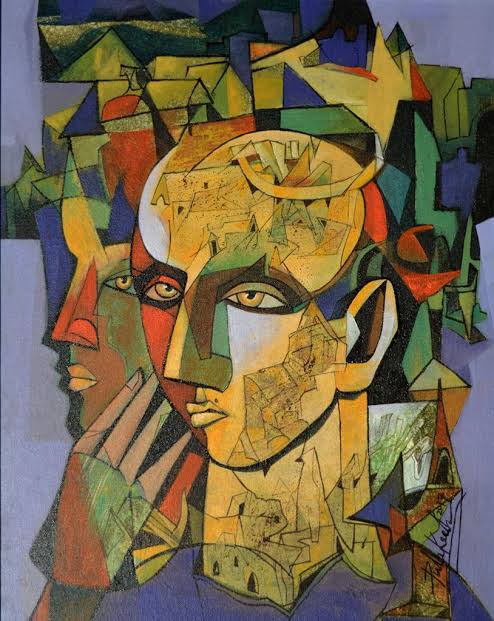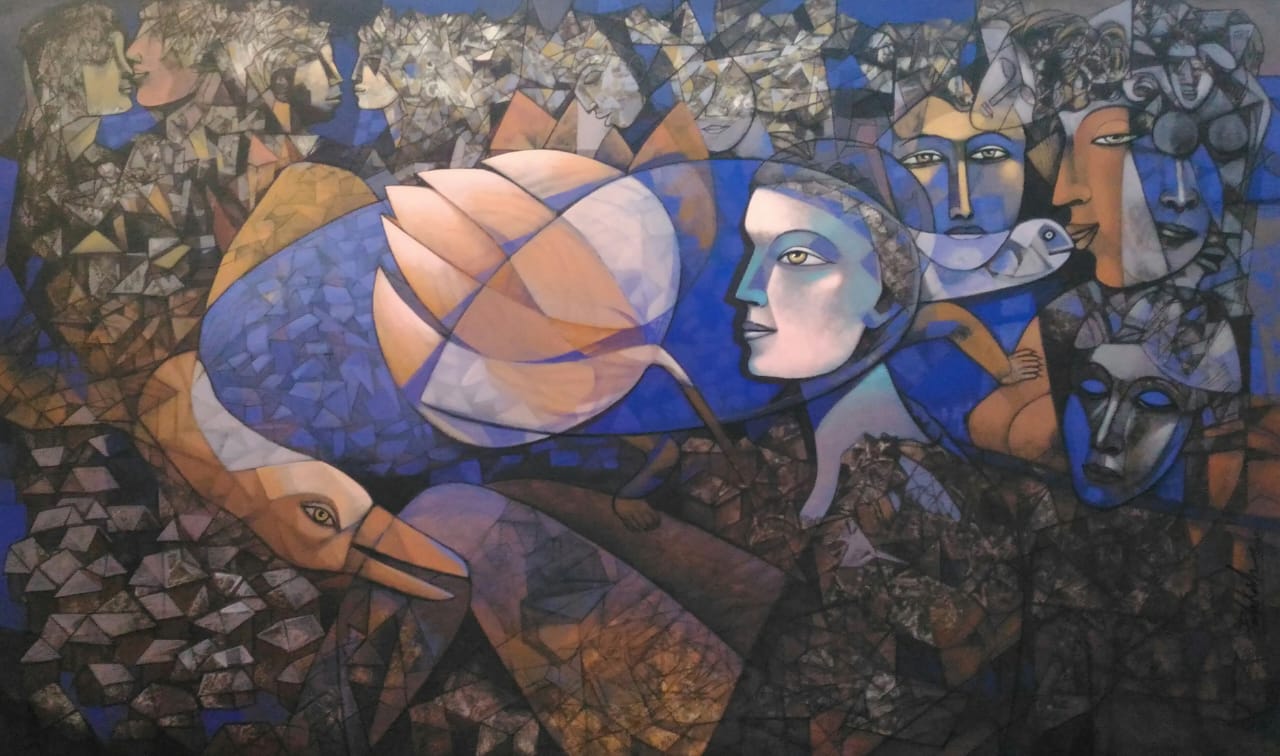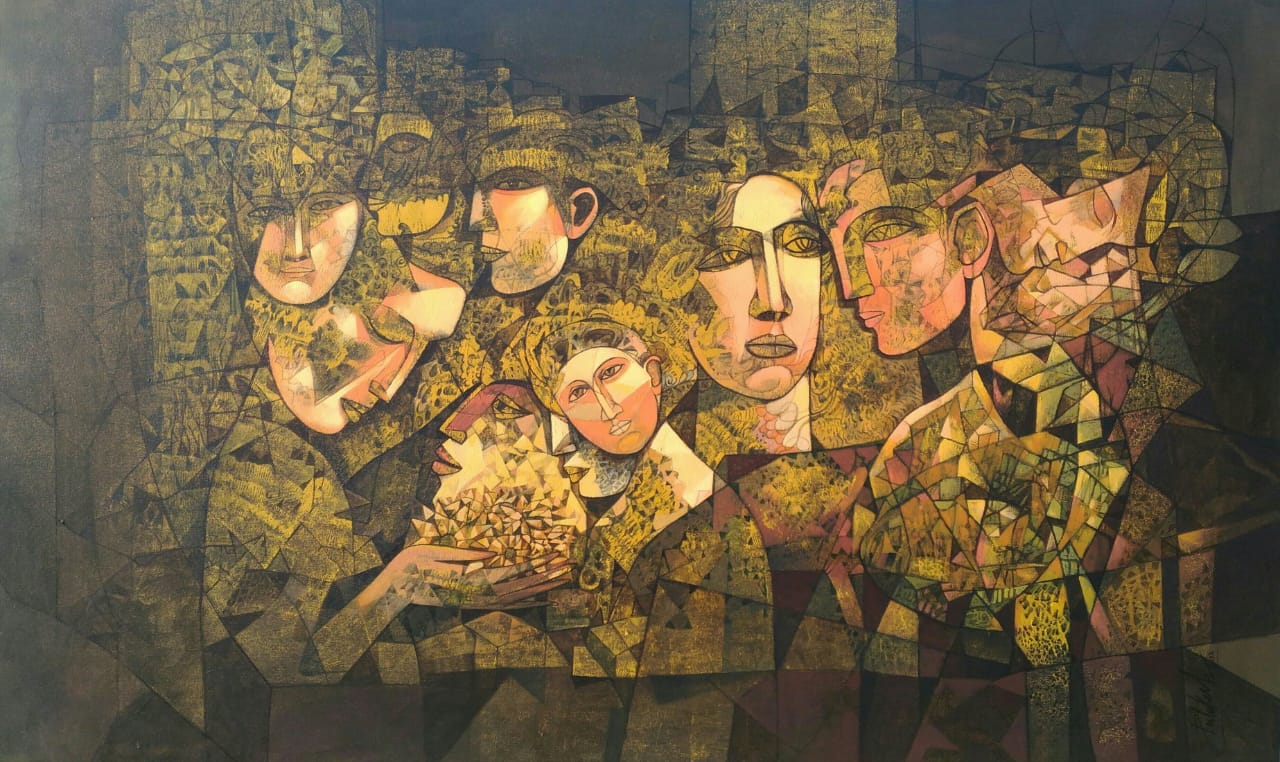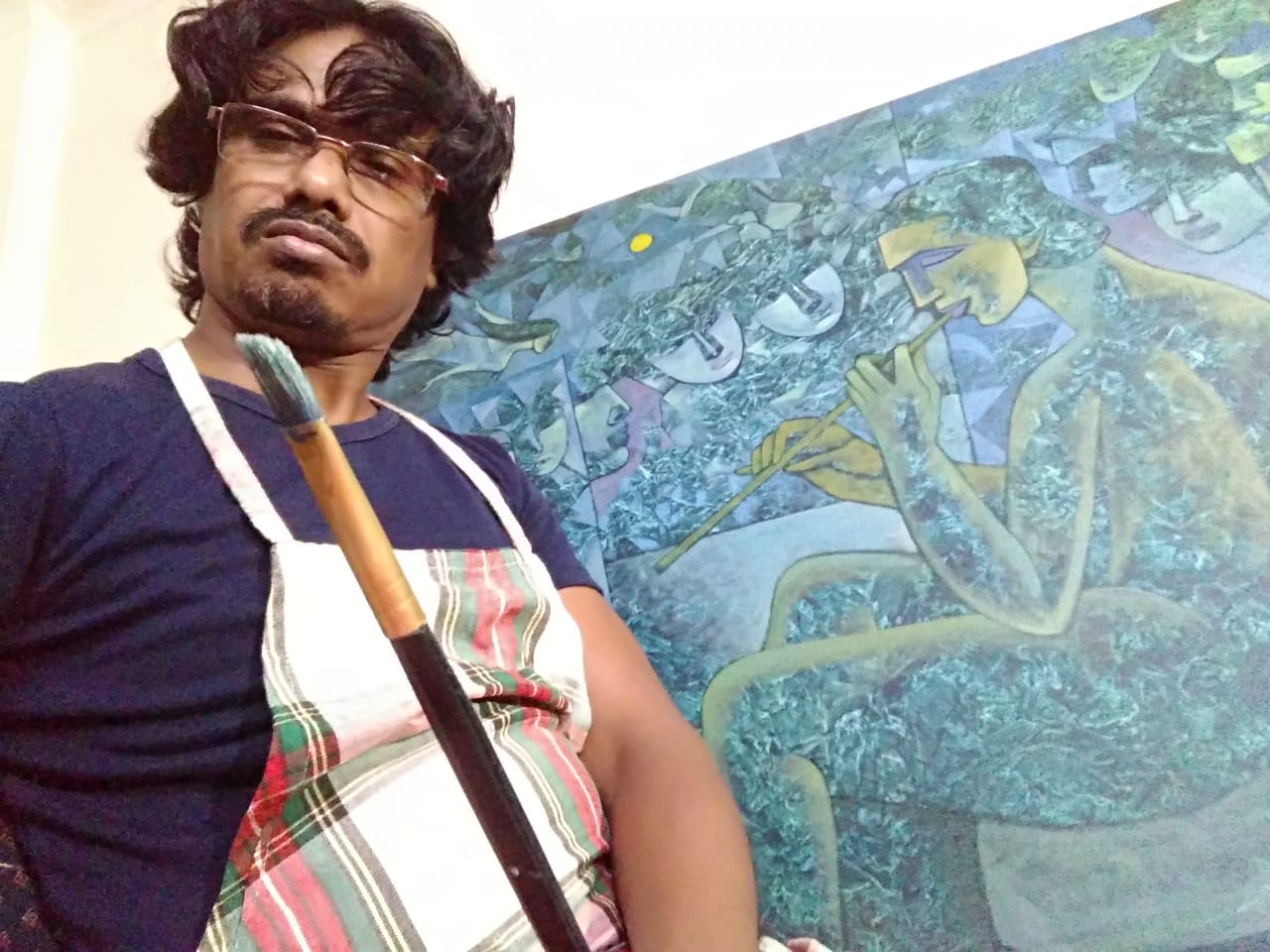
Pulakesh Mandal : Painter
Pulakesh Mandal does not merely paint—he constructs fragments of a life shaped by struggle, solitude, and sheer self-determination. His artistic journey is not born of privilege or formal instruction, but of deep personal discipline and inner clarity. Rising from the grassroots, his path feels like a quiet resistance, etched in silence and shadow.
Born in 1972 in Mahishadal, West Bengal, Pulakesh’s early life was defined by constraints and uncertainty. As a child, he found himself mesmerized by images—printed posters, artworks on walls, and visual fragments from everyday life. He began by copying what he saw. From imitation grew a quiet conviction, one that would eventually evolve into a distinctive artistic voice.
Today, Pulakesh’s visual language embodies a unique abstraction. His lines are precise yet silent, his forms geometric and jagged—bearing the weight of time, emotion, and memory. His figures are contemplative, often surreal, emerging from half-remembered dreams and blurred recollections. There is no linear storytelling here, only signs and gestures—symbols of a life constantly redefining itself.
His turning point came in Delhi, where a new chapter of creation began in the modest rooftop room of an art dealer’s house. Here, Pulakesh found space to paint, to experiment, and to reflect. Frequent visits to the National Gallery of Modern Art opened him to the nuances of Indian modernism. Among the many masters, it was Bikash Bhattacharjee’s work that struck a lasting chord. These encounters shaped Pulakesh—not as a mimic, but as a mirror unto himself. He became his own teacher and his own student.
Today, his work stands in exhibitions and collections not as declarations of arrival but as quiet monuments to perseverance. His images are not easily interpreted—they are layered, enigmatic, and emotionally charged. In his world, art is not a performance, but a revelation. Not surface, but soul.
In every angular contour, in every fragmented form, we glimpse the story of a boy once tracing borrowed images—and now, an artist who draws from the deep well of his own lived experience, guided by the steady geometry of his evolving inner world.


